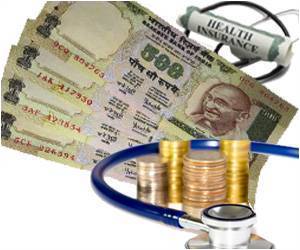
In part that’s because procedures like hip replacements cost so much more in the US, said the study’s lead author Miriam J. Laugesen, an assistant professor of health policy and management at the Mailman School of Public Health at Columbia University. In part it’s because physicians are just paid better here, she added.
On average, primary care physicians in the United States received $186,582 in pretax income a year, compared with $95,585 in France and $92,844 in Australia. When it came to orthopedic surgeons, there was a similar disparity, with US surgeons taking in an average of $442,450 a year, compared with $154,380 in France, $208,634 in Canada and $324,138 in the UK.
“With the recession we have right now, there are a lot of questions about whether physician fees can continue to go up at the pace they have,” Laugesen said. “We can’t say what is the right amount to pay. But we can certainly shed some light on what is going on.”
A similar trend was seen in specific procedures. Hip replacements, for instance, cost almost twice as much in the US as they do in foreign countries: When a private insurer paid, the US cost was $3,996. That’s compared to $1,943 in Australia and $2,160 in the UK, for example. The disparity wasn’t as sharp when there was a public payor, but the US still led the pack with an average payment of $1,634 vs. $652 in Canada, $1,046 in Australia and $1,181 in the UK.
Experts said the study contributed important data to the ongoing health-care debate.
Advertisement
The new data provide a window on something shown by earlier studies: as much as 70 percent of health care costs are due to salaries of health care workers, said Jonathan P. Weiner, a professor of health policy and management at the Johns Hopkins Bloomberg School of Public Health.
Advertisement
Beyond that, Weiner said, the study underscores the inequity between specialist salaries and those of primary care physicians.
“In part it’s due to our cultural acceptance of paying a lot for health care,” said Meredith Rosenthal, a professor of health economics and policy at the Harvard School of Public Health. “Physicians incomes are way above the median. They’re in the top 5 percent.”
As for primary care physicians’ complaints about the disparity between their incomes and those of specialists, Rosenthal said, it’s all just a matter of perspective.
“On the one hand, primary care physicians make a lot more than the average American, but they make a lot less then dermatologists,” she explained. “So the primary care physicians see themselves as relatively impoverished because of their position relative to the dermatologist — not relative to the average working guy.”
But ultimately, Americans need to look at these numbers and think about what they mean, Rosenthal said. “We’re willing to pay physicians so much because we value health care so much,” she explained. “But, physicians are making five times the median income. Is that what we really want?”
Source-Medindia















